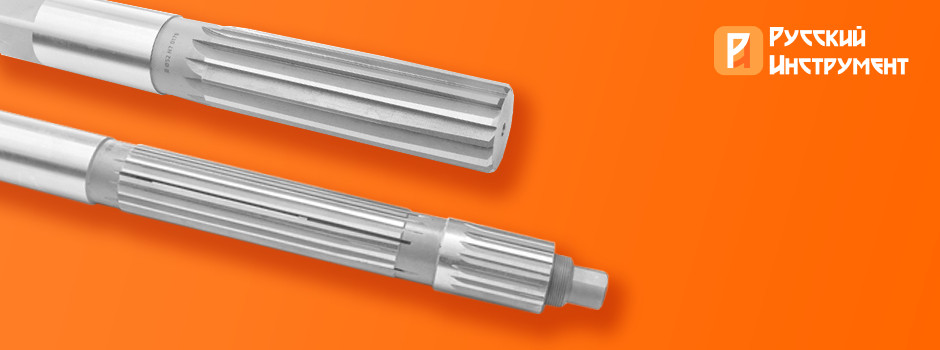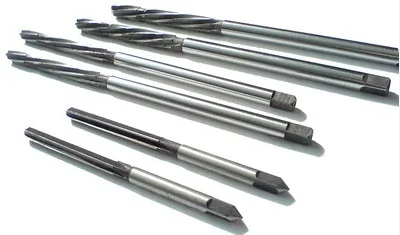
Reamers: design, types and features of use
A reamer is a metal–cutting tool that is used in the process of deployment, that is, the finishing of holes. During operation, not only rotation occurs, but also the longitudinal feed of the sweep. A large number of teeth allows you to remove the thinnest layer of metal, less than a millimeter thick.
The tool can be used to work with holes of various shapes – both cylindrical and conical. Speaking about what a metal sweep is needed for, it should be emphasized that the tool ensures the accuracy of the geometric parameters of the hole, as well as the desired surface roughness class.
Design features of the tool
 The production of scans and their characteristics are regulated by several documents - GOST 29240-91, GOST 11173-76, GOST 7722-77, GOST 1672-80. Alloy and high-speed steels are most often used for the production of tools. The choice of specific brands depends on the material of the workpiece to be processed.
The production of scans and their characteristics are regulated by several documents - GOST 29240-91, GOST 11173-76, GOST 7722-77, GOST 1672-80. Alloy and high-speed steels are most often used for the production of tools. The choice of specific brands depends on the material of the workpiece to be processed.
The design of the tool consists of the following parts:
- Working. It is this section that directly performs the function of deployment, that is, it affects the workpiece with the help of teeth, the number of which can reach 16. An important element of the working part are the grooves necessary for chip removal. There are straight and spiral grooves. The most widespread are direct. Spiral ones are used in working with discontinuous surfaces. In turn, the working part can be represented as the following zones:
- Fence. This zone is necessary for cutting off the metal layer. Its main part is the guiding cone. In addition, the fence area of the sweep includes teeth with sharply sharpened cutting edges that directly cut the metal from the inside.
- Calibrating. As the name implies, this zone is responsible for calibration, that is, fitting the size of the hole.
- Taper. In this zone, the teeth pass into the neck of the tool.
- Transitional. This part is also called the neck. It is a cylinder connecting the working part and the shank.
- Tail. This section is used for fixing the tool in the chuck or collar.
What types of scans exist?
There are various types of tools that are selected depending on the technological tasks that need to be solved.
Types of scans according to the method of use:
- manual. The tool is designed for installation in the collar and has a square shank. The diameter of the sweep is within 50 mm.;
- machine tools. The tool is designed for installation in various metalworking machines. The shank has the shape of a cone or cylinder. The diameter of the sweep can be of any thickness.

Types of scans according to the shape of the working part:
- cylindrical. They are used to work with a standard round hole shape, have straight or screw grooves;
- conical. The sweep has the shape of a cone with a cut top and allows you to process both classic holes and conical ones, creating a cone shape. Straight or screw grooves divert the chips;
- stepped. Such scans are not common. They are considered universal. With their help, you can align the holes in the metal sheets. A distinctive feature of the product is a conical shape with a stepped bevel.
Types of scans for processing accuracy:
- cylindrical reamers differ by quality number;
- conical tools are divided depending on the level of processing into rough, medium and finishing.
Features of the operation of the scans
According to the purpose of the sweep, its application should ensure impeccable geometry accuracy. However, this can be achieved only if properly operated. Considering that the tool undergoes high pressure during use, it is necessary to use lubricant when performing any operations.
When working manually, it is important to screw the tool correctly in order to avoid deformation of the hole. In the case of using machine reamers, it is recommended to install them immediately after the drill. Thanks to this, the scan will receive the same direction, accuracy will be increased, and the beating will be minimized. It is not recommended to work with the scan at high speed. On average, the rotation speed of the drill should be three times higher than that of the sweep. The reduced number of revolutions ensures accuracy and protects against overheating and blunting of the blades.
The company "Русский Инструмент" produces metal-cutting tools. The assortment includes not only reamers, but also much more. Full catalog of the company "Русский Инструмент" on Enex
